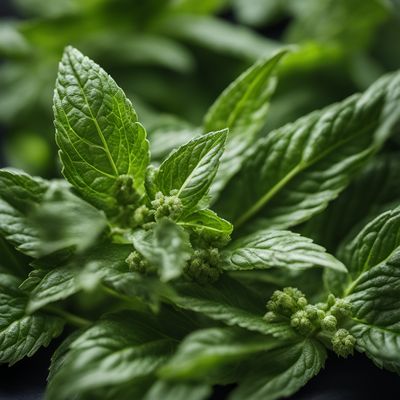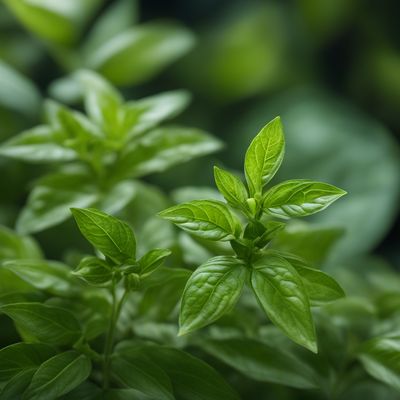
Ingredient
Rice paddy herb
The Fragrant Gem
Rice paddy herb is a herbaceous plant native to Southeast Asia, particularly Vietnam. It has long, slender leaves with a vibrant green color and a distinct aroma. The herb is known for its unique flavor, which combines the freshness of cilantro with a hint of citrus and a mild peppery kick. It is commonly used in Vietnamese, Thai, and Malaysian cuisines to add a refreshing and aromatic touch to dishes such as soups, salads, and stir-fries.
Origins and history
Rice paddy herb has been a staple in Southeast Asian cuisine for centuries. It is believed to have originated in Vietnam, where it is commonly used in traditional dishes such as pho and bun cha. The herb's popularity has spread to other countries in the region, including Thailand and Malaysia, where it is also widely used in local cuisines.
Nutritional information
Rice paddy herb is low in calories and fat, making it a healthy addition to meals. It is also a good source of vitamins A and C, as well as antioxidants. The herb's distinct flavor and aroma can enhance the taste of dishes without adding excessive calories or sodium.
Allergens
There are no known allergens associated with rice paddy herb, making it suitable for most individuals. However, as with any herb or plant, some people may have individual sensitivities or allergies. It is always recommended to try a small amount first if you are unsure.
How to select
When selecting rice paddy herb, look for fresh leaves that are vibrant green in color and free from any signs of wilting or discoloration. The leaves should have a firm texture and a strong aroma. Avoid any leaves that appear yellowed or have a slimy texture.
Storage recommendations
To keep rice paddy herb fresh, store it in the refrigerator. Wrap the stems in a damp paper towel and place them in a plastic bag or container. The herb should stay fresh for up to a week when stored this way. Alternatively, you can also freeze the leaves by chopping them and placing them in an airtight container or freezer bag.
How to produce
Rice paddy herb can be easily grown in a home garden or even in a pot on a windowsill. It thrives in warm and humid climates, making it ideal for tropical or subtropical regions. Plant the herb in well-draining soil and provide it with ample sunlight and water. Regular pruning will help promote healthy growth and ensure a steady supply of fresh leaves.
Preparation tips
Rice paddy herb is commonly used in Vietnamese, Thai, and Malaysian cuisines. It is often added to soups, such as pho or laksa, to impart a refreshing and aromatic flavor. The herb is also used in salads, stir-fries, and spring rolls to add a burst of freshness. Additionally, it can be used as a garnish for grilled meats or seafood to enhance their taste.
Culinary uses
Rice paddy herb is commonly used in Vietnamese, Thai, and Malaysian cuisines. It is a key ingredient in dishes such as pho, a traditional Vietnamese soup, and laksa, a spicy noodle soup popular in Malaysia and Singapore. The herb is also used in salads, stir-fries, and curries to add a refreshing and aromatic touch. Its unique flavor makes it a versatile herb that can elevate a wide range of dishes.
Availability
Rice paddy herb is commonly cultivated and consumed in Southeast Asian countries, particularly Vietnam, Thailand, and Malaysia. It is also available in some specialty Asian markets or grocery stores in other parts of the world.
More ingredients from this category » Browse all

Lizard tail
The Enigmatic Delicacy: Lizard Tail

Holy basil
The Sacred Herb: Holy Basil

Lemon balm
The Zesty Herb: Lemon Balm

Vietnamese mint
The Zesty Herb

Lemon basil
The Zesty Herb: Unveiling the Delights of Lemon Basil

Greek bush basil
The Fragrant Herb of the Mediterranean: Greek Bush Basil

Hoary basil
The Aromatic Herb: Hoary Basil

Asiatic pennywort
The Healing Herb: Unveiling the Wonders of Asiatic Pennywort

Thai basil
The Fragrant Herb: Thai Basil

Chinese mesona
The Cooling Elixir

Basil
The King of Herbs

Lesser calamint
The Mediterranean Herb Wonder